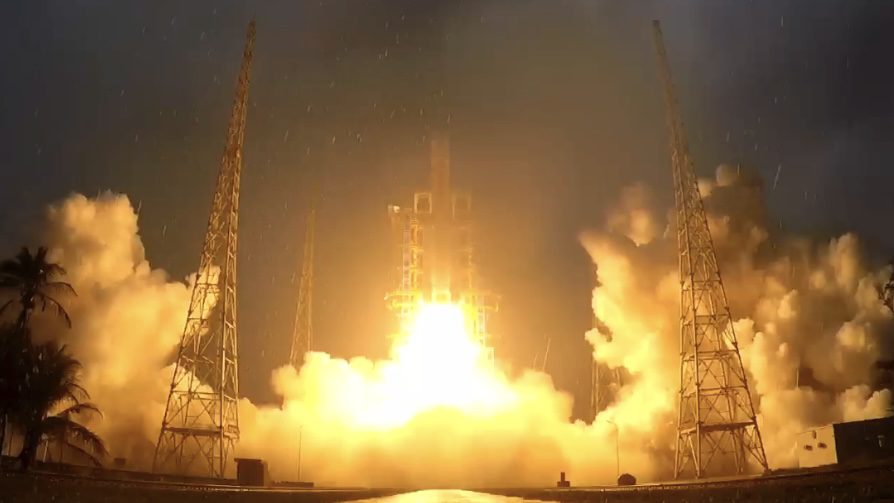Chang’e 6 Lunar Probe Brings First Far Side Moon Samples
Chinese Lunar Probe Brings First Far Side Moon Samples

Historic Achievement: Chang’e 6 Mission Success
China’s Chang’e 6 probe has returned to Earth with rock and soil samples from the far side of the moon, a global first. The probe landed in Inner Mongolia on Tuesday, marking a significant milestone in lunar exploration. Zhang Kejian, Director of the China National Space Administration, declared the mission a “complete success” during a televised press conference.
These samples are expected to include volcanic rocks dating back 2.5 million years and materials that could explain the differences between the moon’s near and far sides.
Exploring the Moon’s Far Side
Unlike the near side, which is visible from Earth and relatively smooth, the far side of the moon features rugged mountains and deep impact craters. The Chang’e 6 probe landed in the South Pole-Aitken Basin, a massive crater formed over 4 billion years ago.
Scientists believe the collected samples will include materials from different layers of the basin, providing insights into the moon’s early geological history and volcanic activity. This mission sets China apart, as no previous lunar missions from the U.S. or Soviet Union have collected far side samples.
A Leap Forward in Space Rivalry
China’s lunar exploration marks a growing space rivalry with countries like the U.S., Japan, and India. President Xi Jinping hailed the achievement as a “landmark” in advancing China’s technological and space ambitions.
The Chang’e 6 mission builds on previous successes, including the Chang’e 5, which collected samples from the near side. This time, the mission also aims to study meteorite impacts and their role in shaping the moon and solar system.
China plans to share the findings with international scientists, showcasing its growing leadership in space exploration. Stay updated on trendsnip.com for more breakthroughs in science and technology.
Main Points Summary of Chang’e 6 Lunar Mission
"First-ever successful mission to collect samples from the far side of the moon."
"Landed in the South Pole-Aitken Basin, a 4-billion-year-old impact crater."
"Returned samples include volcanic rocks, soil, and materials to study the moon’s geology."
"Mission provides insights into the moon’s early history, volcanic activity, and surface differences."
"Strengthens China’s position in the growing space rivalry with the U.S., India, and Japan."
"China plans to share the returned samples with international scientists."
About the Author
Michael
Administrator
Michael David is a visionary AI content creator and proud Cambridge University graduate, known for blending sharp storytelling with cutting-edge technology. His talent lies in crafting compelling, insight-driven narratives that resonate with global audiences.With expertise in tech writing, content strategy, and brand storytelling, Michael partners with forward-thinking companies to shape powerful digital identities. Always ahead of the curve, he delivers high-impact content that not only informs but inspires.



